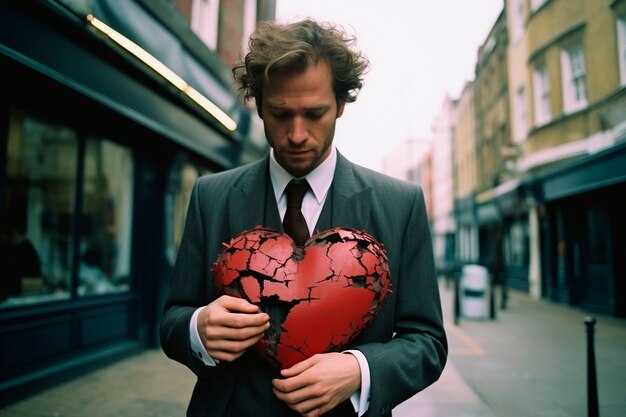You may have seen the many disclaimers lately in my courses, videos, and their descriptions — I’ve been clearer than ever about one thing: I’m not a clinician. Most people here already know that I’m someone who recovered from severe, complicated PTSD symptoms. What I share are the practices I used to heal myself and the guiding principles I adopted to rebuild my life — approaches I still use and teach to help others avoid slipping back into familiar, self-defeating behaviors that so often follow traumatic childhoods.
I want to underline that self-defeating patterns are a common, even predictable, outcome for people raised in traumatic environments. They happen to many different people, but those of us from disrupted or dangerous childhoods often carry a larger share. Some viewers get irritated or skeptical when I speak with confidence about my recovery — a few react as if only someone with formal clinical credentials has the right to discuss healing. Those folks I call credentialists: people who insist that only psychologists, social workers, or medical professionals should have a voice on mental health. I respectfully disagree. Mental health is an experience we all live through, shaped by our daily lives, interactions with others, and the lessons we learn. Practical lived knowledge matters.
Once, someone suggested I should include a disclaimer on my short meditation tutorial telling people they must meditate only under the supervision of a licensed professional. That struck me as excessive — you don’t need a therapist sitting beside you every time you meditate. The implication that professionals are always on call, ready to sit with you during a simple practice, struck me as elitist and unrealistic. That said, I accept the obvious: when someone is in acute distress, professional intervention is necessary, and YouTube is not the place for crisis care. The name “Crappy Childhood Fairy” itself signals I’m not presenting this as formal therapy. My focus is practical support — sometimes I read letters from viewers asking for troubleshooting on real-life problems — and I want people to know what I am and am not offering.
To answer those who wonder about my background: I hold a master’s in public policy from the Goldman School at UC Berkeley and a bachelor’s in video production from San Francisco State University. Those degrees influenced me, but they do not define the source of my work. Before Crappy Childhood Fairy, I worked extensively in community health, helping to improve clinic functioning and patient experience within a large national health system. Later, my video production company produced medical education content, including dramatized scenarios about navigating difficult conversations in clinical settings. Those experiences helped shape my approach, but the bulk of my expertise came from the imperative to heal myself in a world that didn’t understand me.
For years I lived with what was clearly complex PTSD, though it wasn’t always recognized as such. I describe this history in my book Reeregulated (I hope you’ll read it). At one point I was seeing a therapist three times a week after a string of traumatic events — my mother’s death and a violent street attack among them — yet those clinicians didn’t diagnose PTSD. The prevailing therapeutic assumption I encountered was that talking about trauma until the subject was exhausted would resolve it. We now better understand that for many people, rehashing traumatic events when the body and nervous system are already mobilized (rapid breathing, pounding heart) can retraumatize rather than heal. For me, traditional talk therapy, while sometimes providing companionship in dark moments, was not the turning point.
My childhood was chaotic and harsh: substance abuse, violence, chronic poverty, and a parent who, when drinking, would tell us she didn’t want us. We learned to make jokes about our situation as a survival mechanism, but that didn’t change the damage. In therapy I often felt unseen by practitioners whose own upbringings did not mirror mine; they interpreted my problems through less extreme lenses and sometimes assumed everything was “fine” because I presented well. Yet many wounds from early life predate language, and some aspects simply can’t be named in therapy the way other issues can.
After many years of therapy I found the 12-step community, and that work became some of the most powerful healing I experienced. Over about 25 years I attended thousands of meetings, learned from others’ struggles and recoveries, and began sponsoring women — guiding at least 300 through an off-the-beaten-path daily program that I adapted into my own routine. This daily practice, which I still use, produced noticeable, dramatic changes in people: a brightness in the eyes, a newfound cheerfulness, greater flexibility, better boundaries, and more ease in everyday life. Where trauma once made me prickly, defensive, and demanding that others change for my comfort, a steady practice helped me meet life on its terms, respond with calm honesty, and say “no” gracefully when needed.
Not everyone in the 12-step world approved of my methods; some thought I wasn’t following the program “correctly.” My answer was simple: if my approach isn’t right for you, find another sponsor. That was my protection. When recovery turned my life around so rapidly, I felt compelled to share it widely — the urge was as urgent as wanting to deliver a cure. Hence the free daily practice course linked under every video. People who sign up can attend free two-hour Zoom calls twice a month where we practice together, and I take questions. Those calls are a huge joy and, for many, a practical lifeline. About 15% of people who come to my programs are themselves therapists or doctors, which I welcome. Many clinicians refer their clients to Crappy Childhood Fairy videos or the daily practice because those tools can complement clinical work. Still, I am not a licensed mental health professional; I’m someone who reclaimed a lot of emotional well-being compared to where I started. I don’t claim perfection, but I have seen thousands of people have meaningful breakthroughs.
The daily practice and related techniques have not yet undergone formal scientific trials — I’d love that to happen and would welcome researchers to reach out. In the meantime, these methods are simple to try: if they help you, use them; if they don’t, feel free to discard them. I always tell people to take what I offer with a grain of salt.
Spirituality has also become part of my story. Almost twenty years ago I asked trusted mentors for guidance to take big leaps, and gradually a faith emerged for me. I don’t advertise it constantly because it’s important that Crappy Childhood Fairy remain accessible to people of all faiths or none at all. Still, I sometimes say plainly that I’m a God person now. Early on I was encouraged to try a prayer as a small experiment; when it brought me relief, I began to call that presence my Higher Power. Over three decades my sense of that has fluctuated, but the core realization remains: healing often feels like a natural direction the body and life move toward. Just as skin repairs itself after an abrasion without having to “figure out” the process intellectually, many aspects of recovery can unfold naturally. Some losses, however, are more like an amputation — they can’t be fully restored. In my case I will never receive the consistent, protective childhood love I longed for; my mother has been gone for 31 years, the same span of time I’ve been on this healing path. The remedy wasn’t restoration of that lost childhood, but building a support network as a grown person. For me, healing and constructing a support system happened together — one enabled the other.
Recovery often happens through ordinary life friction: relationships, work, and the small and large disruptions that push the nervous system. You practice returning yourself to steadiness. Early healing might look messy: either swallowing everything or later lashing out. Over time, with practice, people learn to name, express, and release fearful and resentful thoughts so they don’t fester. That naming-and-releasing is central to the daily practice I teach: write fears and resentments down, ask for them to be removed, then spend a short meditation period restoring calm. For me, 20 minutes of practice can dissolve the cloud of turmoil and restore balance.
My role is more like a coach, mentor, or wise friend than a therapist. Therapists are trained to diagnose, create treatment plans, and manage crises — that’s their domain and critically important. I’m drawn to practical, present-oriented tools people can use immediately to improve their reactions and choices: how not to explode, how to avoid impulsive relationship decisions, how to set better boundaries. I also offer moral clarity at times — the kind of straightforward guidance some clinicians hesitate to give because of ethical boundaries. I’ll say things like “don’t lie” or “don’t do that” when it’s useful, and I’ll sometimes tell someone my honest opinion when asked. I don’t give unsolicited advice; if I sense a person is particularly fragile, I may refrain because public comments can attract cruel feedback. That responsibility shapes how I respond to letters.
When people write in via the link in every video description, they immediately see a notice that this is not therapy and that if they are in crisis they must seek professional or emergency help — international and U.S. crisis numbers are provided. My team follows careful procedures for any message that indicates imminent danger; when possible, we try to find out where the person is and involve emergency services. It rarely happens, but we take it seriously. Early on, Pete Walker (author of Complex PTSD: From Surviving to Thriving) advised me not to feel responsible for “saving” people who write in; instead, he told me to refer them to professionals. That advice prevented burnout and has guided how we operate.
I try to run a civil, compassionate community. The comment section is my virtual living room: treat other people with kindness. If you want to help someone feel a little lighter today, leave a supportive comment on a video. Many people who have never met each other offer sincere encouragement there. Of course, some commenters are mean; some lash out without having watched the video. Often cruelty is a sign of someone else’s distress, but I don’t tolerate trolling. I remove comments when they’re needlessly cruel, and I urge others not to engage with anonymous nastiness unless you’re prepared to moderate or redirect it.
The thousands of letters I receive are an education. They may not be a formal clinical training, but they’re an in-depth study of how people’s minds and lives operate after trauma. Over time certain patterns become clear: for instance, a blurred sense of identity often traces back to parents who were inattentive. I visualize these patterns almost synesthetically — shapes, colors, textures — which helps me sense what a letter writer might be experiencing, sometimes even more clearly than a face-to-face conversation. Those letters, the comments, and the daily work of making videos form the core of my practical expertise.
I do maintain connections with clinicians and content creators who are mental health professionals — colleagues and friends I consult when needed. Names that come to mind are Patrick Teahan (often speaking about C-PTSD) and Emma McAdam of Therapy in a Nutshell, who provides excellent concise explanations of therapeutic concepts. If something personnel or complicated emerges, I sometimes check in with my professional friends for perspective. Having that network is a real resource.
To be clear about the distinctions: a therapist is trained to diagnose and manage crises; a coach or mentor focuses on strategies to improve current functioning. Because access to trauma-informed professionals is uneven and sometimes limited, a lot of people do much of their early self-assessment themselves. I encourage that kind of sovereignty: you are the primary expert on your own life. Use professional resources if you can, but don’t wait if no help is available; try practical tools and see what helps.
If you want to learn the daily practice, I offer a free course that takes about an hour to learn the basics, along with FAQs and deeper material that explains the method’s history and its relationship to 12-step work. My book Reeregulated lays out the whole approach in detail. Many clinicians have endorsed the practical utility of these tools. There’s also a link to BetterHelp in my description for people who want an accessible, relatively affordable option for online therapy; betterhelp.com/ccf gives 10% off your first visit, and I receive a small commission if you use that link. If online therapy doesn’t suit you, that’s fine — just know there are options to explore.
Finally, thank you to everyone who’s asked about my qualifications or expressed relief at not having to pursue clinical training to find relief. I strive to be transparent about what I do and don’t offer. Keep doing the work, claim your sovereignty, use whatever resources help you, and if you want to try the daily practice there’s a free course link below — take it, and you’ll be invited to a Zoom call with me where I’ll answer questions live. See you soon. [Music]


 Here’s My Story on How I Learned to Help Others Heal Their Trauma Symptoms">
Here’s My Story on How I Learned to Help Others Heal Their Trauma Symptoms">

 Stop Having Sex?! Why a Hiatus Unlocks an Avoidant’s Deepest Bond">
Stop Having Sex?! Why a Hiatus Unlocks an Avoidant’s Deepest Bond">
 What to Do When You’re In Love With Someone Who Can Ruin Your Life">
What to Do When You’re In Love With Someone Who Can Ruin Your Life">
 Women aren’t Attracted to "Nice Guys"">
Women aren’t Attracted to "Nice Guys"">
 Do Not Underestimate Avoidants: Architects of Deception | Avoidant Attachment Style">
Do Not Underestimate Avoidants: Architects of Deception | Avoidant Attachment Style">
 Why You Can’t Stop Obsessing Over the Abuser (Even After You Leave)">
Why You Can’t Stop Obsessing Over the Abuser (Even After You Leave)">
 The Shocking Truth Behind Why Avoidants Disrespect You (And Test Your Love)">
The Shocking Truth Behind Why Avoidants Disrespect You (And Test Your Love)">
 STOP Trying to Make People Respect You & DO THIS Instead">
STOP Trying to Make People Respect You & DO THIS Instead">
 How to Build a Loving Relationship with an Avoidant Without Getting Hurt">
How to Build a Loving Relationship with an Avoidant Without Getting Hurt">
 Help! My Girlfriend has too much Masculine Energy!">
Help! My Girlfriend has too much Masculine Energy!">
 5 Signs an Avoidant Is Secretly in Love With You">
5 Signs an Avoidant Is Secretly in Love With You">